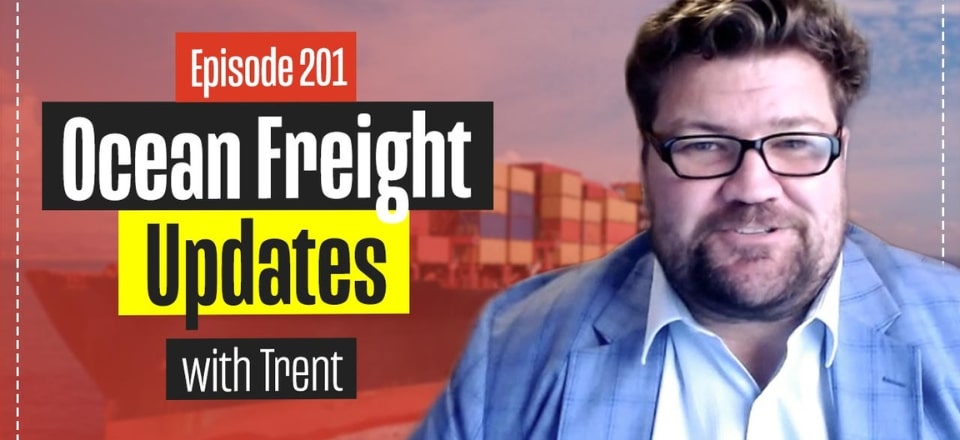In this video, I’m joined by Trent Morris, fresh off the Trans-Pacific Maritime Conference, to provide an in-depth look at the latest trends in international logistics.
Together, we’ll unpack recent shifts in ocean freight rates, the state of global shipping, and actionable strategies for logistics managers navigating today’s market.
Watch our in-depth update in the video below.
Recently, Trent attended the Trans-Pacific Maritime Conference in Long Beach, California, where shipping professionals gathered to discuss the future of international logistics. After hearing his key takeaways, I wanted to share some insights into where the industry stands today and what businesses should focus on moving forward.
The Pandemic’s Impact on Ocean Freight
The pandemic drastically disrupted the shipping industry, with skyrocketing demand, especially in e-commerce, driving freight rates up by as much as 50% between 2020 and 2021. Service reliability also took a hit. However, we’re now seeing stabilization, with rates moving closer to pre-pandemic levels. Experts predict that rates will return to something similar to 2019, with minor fluctuations based on market conditions.
What’s Affecting the Market?
At the conference, it was clear that rates are gradually normalizing. For contract negotiations in the next year, it’s reasonable to use 2019 rates as a benchmark, though specifics will depend on your market position. Service reliability is still an issue, with on-time performance at 50%, well below the historical average of 75%. To manage this, shipping lines are using blank sailings—cancelled voyages—to balance supply and stabilize rates, though this could affect availability in the short term.
Helping Clients Navigate Change
We’re helping clients adjust to the shifting logistics landscape by locking in low rates for essential freight and capitalizing on spot rates for non-critical cargo. We’re also working on optimizing inventory strategies to improve supply chain efficiency. Another key focus is building direct relationships with carriers, which offer more stability in an unpredictable market.
What Ocean Freight Managers Should Focus On
For those managing ocean freight, it’s important to lock in low rates for high-priority shipments while taking advantage of low spot rates for less urgent goods. Strengthening relationships with carriers is crucial for long-term stability. Finally, staying ahead of regulatory changes is key—being proactive will help minimize risks as new legislation impacts the industry.
Related articles on this topic have appeared throughout our website, check them out:
- 10 Freight Management Mistakes and How to Avoid Them
- Freight Benchmarking: What Is It? Why Do It?
- 12 Smart Ways to Reduce Your Freight Costs
Editor’s Note: The content of this post was originally published on Logistics Bureau’s website dated May 24, 2023, under the title “Ocean Freight 2023 Update with Trent Morris“.


